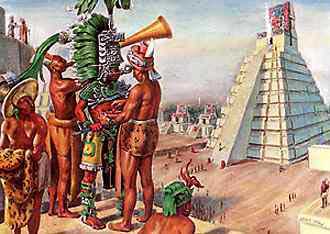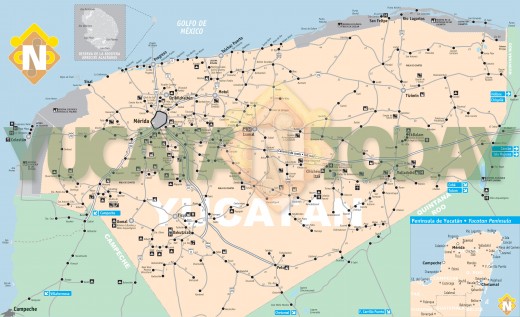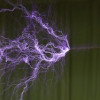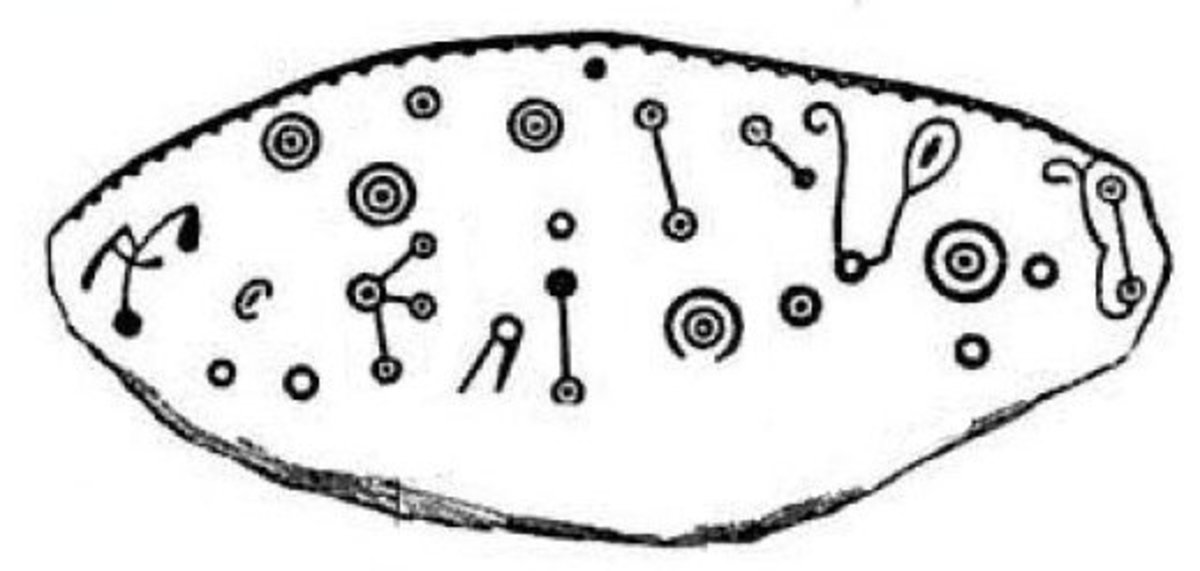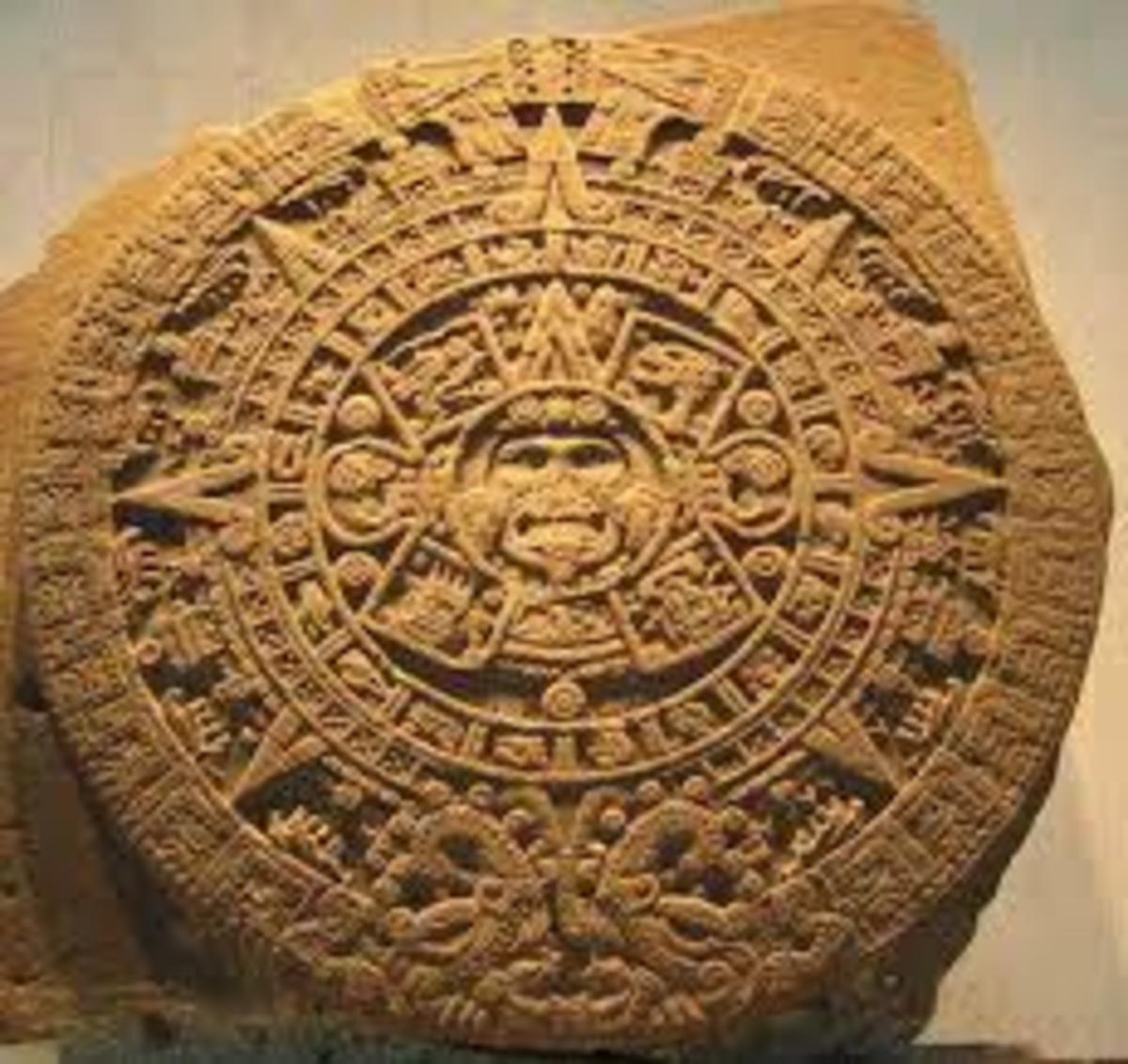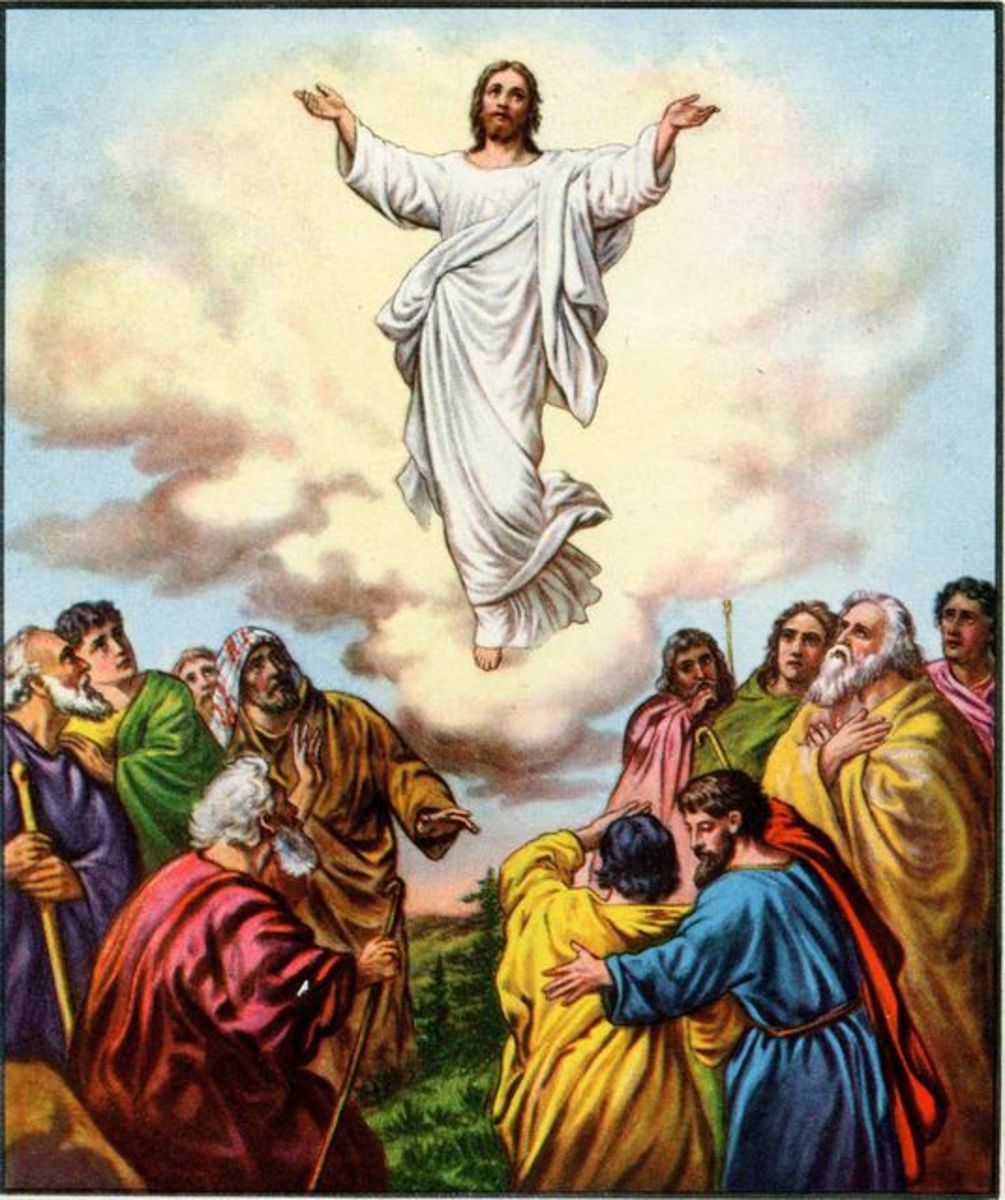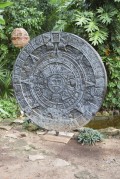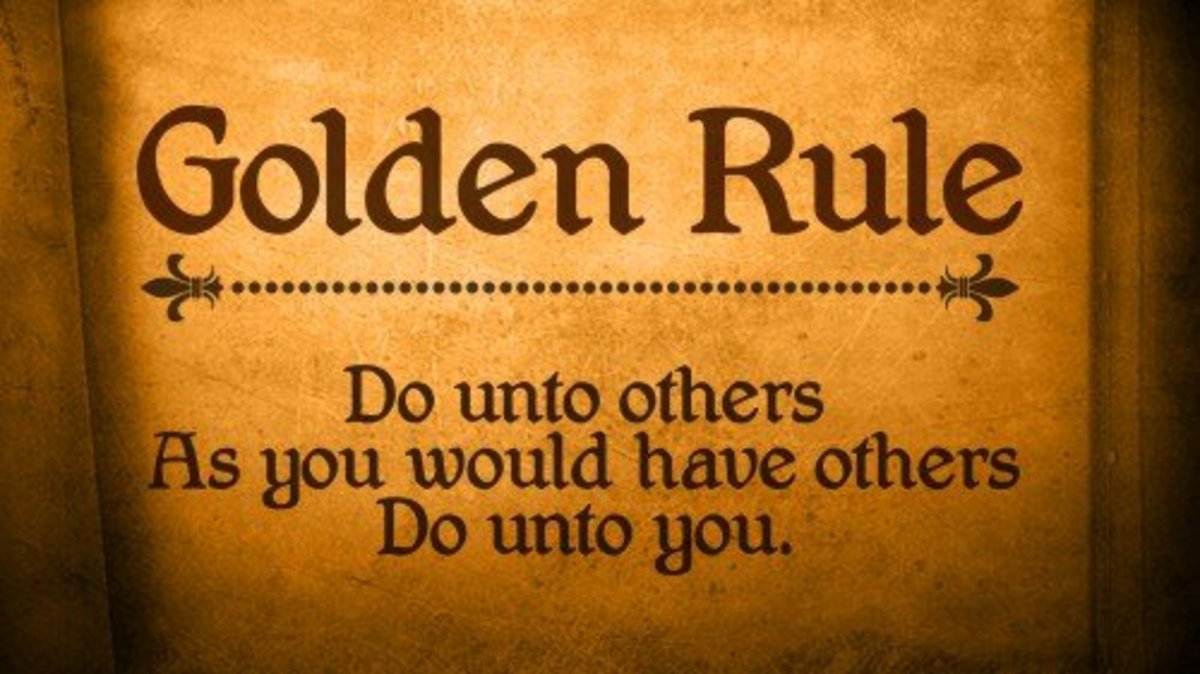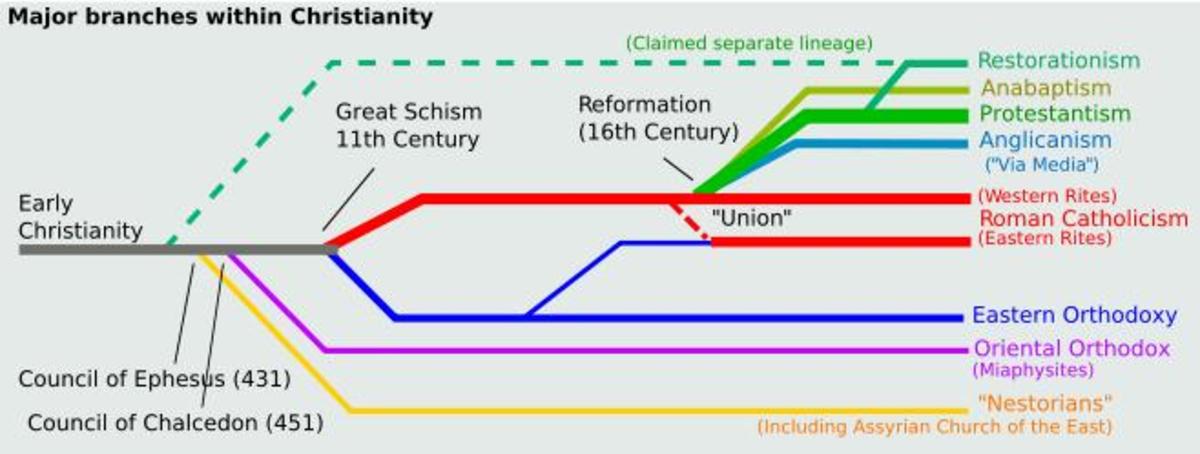The Feathered Christ; god of the Toltec and Mayan Part Two
El Castillo or in English ..."The Castle."

The Mayan Connection
Did you pack your trawl, a good fine-haired brush, sun block and machete? Good, because we will be taking quite a trip! We are going to explore the dark and dangerous past of the Mayan and Toltec. The goal of this cyber adventure is to hack or way into a world long forgotten. This world has been overgrown with the choking vines of religion and politics. We will wade though the murky swamps of superstition and then up the steep steps of an ancient temple were we will watch for the shadow of The Feathered Christ! We will not find all the answers, but there will be enough “artifacts of truth” found along the way that will make the trip worth taking.
The relationship between the Toltec and the Mayan is very complex one that is at times is hard to get a grasp on. It is known that they had great influence on each other and there is one viewpoint that makes the Toltec as a kind of “Missionary” to the Mayan, converting them to the worship of Quetzalcoatl. Then there is the hint in the Aztec accounts that makes it appear that there was a knowledge exchange between the two cultures.
There is an alternative to the “peaceful missionary” concept supported by artwork in Mayan ruins, that show the Toltec as invaders that forced there religious point of view on the Mayan. It is interesting to note, that when the Toltec were almost annihilated by the
Chitimecs, the refuges of the Toltec were assimilated into the Mayan culture. What is not completely clear is if the Mayan already worshiped Quetzalcoatl, or was he introduced to them by the Toltec? To help us get some clarity, we will venture to place filled with so many mysteries it has just recently been considered one of the “new’ seven wonders of the world.
Chichén Itza
Down in the Yucatán, that world famous torus trap, are some of the most extraordinary Mayan ruins. Here Quetzalcoatl is known as Kukulcan. His shadow supposedly descends the steps of El Castillo (or “the castle” in English). This Pyramid is also known as the Pyramid of Kukulcan. During every spring and fall equinox, there is a strange natural phenomenon. As the sunsets or rises, it creates the illusion of a shadowy serpent slithering down the staircase into the carved head at the base. This event takes place on the north staircase, along the west side. This Pyramid is 75 feet high and has one-step for each day of the year, with the top platform being 365th step. This computes to 91 steps on each side. The structure that is strongly Toltec influenced, has been built on top of an earlier pyramid.
The name Chichén Itza is said to roughly translate to “Magicians of water” which is reference to the natural sinkholes that Mayan considered sacred. These sinkholes a re the only sources of fresh water though out that area. When adventures divers dared to explore these natural wells, they have found the remains of human sacrifices and all kinds of treasure offered to the gods. Chichén Itza has been chosen a World Heritage site by the UNESCO. There is no other place in Mexico were the Toltec has had more influence of the Mayan than at this site.
“The Old Ball Game.”
Another thing the Toltec and Mayan have in common is the Ball Game known as pok ta pok by the Mayan. The game originated with the Olmec Civilization (which translates to The Rubber People), going back about 3,000 years. In fact, the largest ball court in Mexico is found in Chichén Itza. This is Juego de Pelota and measures 554 feet or 168 meters in length. This game was said to be called pok ta pok because this the sound the rubber ball made when it hit the court. The interesting thing about this court is that it is much more a mix of the Mayan and Toltec style of the game than any other place. Juego de Pelota has the typical “goal rings” you find on all of the Mayan ball sites and yet they are decorated with plumed serpents instead of the more traditional Mayan rings. The Toltec, by the way, did not use rings.
Both the Toltec and Mayan played with a rubber ball and human sacrifice was common. For the Mayan, the game was a ritualistic portrayal of a popular myth involving twin brothers. The Myth involved the story from the Popol Vuh of the Hero Twins who defeat death in a ballgame. On the other hand, the Toltec myths stated that Quetzalcoatl and Tazactlipocor, his archenemy, had it out on the ball field and Tazactlipocor was the victor. Who said “good” always wins?
Oh no, not the bearded god again!
If you research this subject, long enough you will see reference to bearded deities in several cultures though out the history of Latin America. Sometimes he will wear a white robe or other attributes that would seem to connect him to Jesus. BUT NOT SO FAST! For I think I am getting a whiff of the stench of fabrication!
Let us remember that when the Spanish came to the new world they brought there own agenda. Just for giggles, let us put our selves in there shoes for a moment. Here they are newcomers to a hostile environment. They are out numbered by people who are no strangers to Human Sacrifice! They needed to find ways to get the upper hand, and keep it! They had to find ways to make the natives believe there was only one God. I was not there so I am not sure how it went down and yet, the Catholic Priest must have searched for ways they could get the Mayan who they perceived to be lost, to relate to Christianity. I think that a lot was read into the myths and history or downright added on. One place this figure is depicted is in Chichén Itza inside the North Temple right next door to “The Create Ball Court.” This place is also known as Temple of the Bearded Man. For inside is a carved figure that appears to be bearded.
Of course for The Mormons have a vested interest in finding proof that Christ made an appearance in the Americans and yet…. If you take a closer look at gods like Quetzalcoatl, you will see several reasons why this is hard for me to buy. Now I do however, see more connections with the Buddha! I will also show you a hint of something much darker and sinister! We will look at Shape Shifting, Psychedelic drug use and a more detail look at human sacrifice.
For right now, I am going to leave those items on the shelf until the next episode when I will return to the Toltec Capital of Tula and whip out the trusted old magnifying glass to closely examine what the man, Ce Actal Topiltzin really stood for! The reason that I choose to wait to drop this bomb is…I LIKE MAKING YOU SUFFER! Oh calm down, I was only kidding! The way I decided to structure this series, is to do little bit of time travel. We started with the Aztec and Spanish look at this Plume Serpent fellow and now we are wrapping up the Mayan connection. Then, FINLEY we will get to heart of it all and connect as many dots as possible, taking a look at several other aspects to this mystery.
THE TRUE PEOPLE
As promised, I now will return to peering into the Popol Vuh, for I do find their concept of creation quite intriguing. It has an account that reminds me a little of the book of Genesis. First, let us look at the translation of the title into English. It is important to note that the book was transliterated into Spanish before English. The most literal translation is "Book of the Mat.” It has also been called “Book of the Community” or "Book of Counsel.” Here is a look at a passage from the first chapter which reminds me a little of Genesis account of creation. “There was only immobility and silence in the darkness, in the night. Only the Creator, the Maker, Tepeu, Gucumatz, the forefathers, was in the water surrounded with light. They were therefore called The Heart of Heaven.”
Right off the bat, it mentions Gucumatz which is the Quiché Mayan name for Quetzalcoatl. It leads you to believe he is the “Maker.” One point I would like to make, is that the Popol Vuh originates in Guatemala. It was written by the Quiché Mayan, who is different in many ways to other groups of Mayan. They look at themselves as the “True People" who were a later construction than the "wood people", who were, according to the Popol Vuh, destroyed by a flood.
As I have stated earlier that the translation of the Popol Vuh, was a long and difficult procedure, since most of the transcript was created for oral reciting. Also, it is important to note that the Mayan culture has been greatly influenced by the Toltec and other invading people as early as 387 AD. Because of these early influences, it is hard to figure out what is truly Mayan and what has a mixture of culture influence.
So when someone makes a statement that the Mayan prophesied this or that….my response would be “prove it!” In saying this, I am aware of one prophesy that clams that beneath the ball court in Chichén Itza, Juego de Pelota, Kukulcan will rise up and destroy the world when the long count calendar comes to a sudden halt on December 21, 2012! You see, the Mayan did predict the end of the world! It is important for me to point out, that this is just one rumored account... AND was probably made up so someone can make some MONEY! However I do have good news... BUT YOU HAFT TO WAIT FOR THE NEXT INSTALLMENT!
Take me out to the Ball Game... and then Sacrifice me to the Plume Serpent...WAIT THAT'S NOT HOW IT GOES!
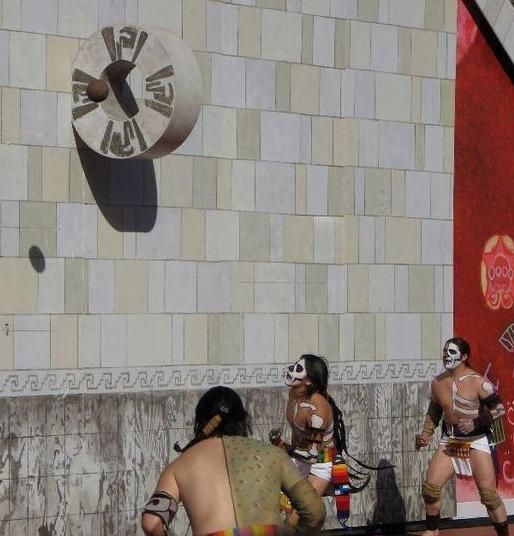
This is a great shot...but I do not have musch to say about it!
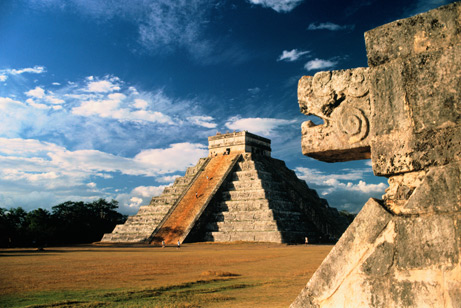
All dressed up but no one to sacrifice!
